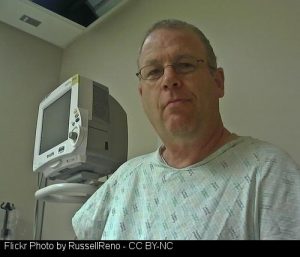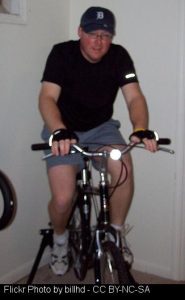 (NAPS)—Every 42 seconds, someone in the U.S. has a heart attack—but you needn’t be among them.
(NAPS)—Every 42 seconds, someone in the U.S. has a heart attack—but you needn’t be among them.
Consider this: Julie Kubala was one of those statistics. She’s working now to ensure she doesn’t become a different stat—about 21 percent of women and 17 percent of men age 45 and older will have another heart attack within five years of their first one.
To help, the American Heart Association (AHA) launched a new educational campaign aimed at reducing the number of repeat or recurrent heart attacks by arming survivors with simple but effective steps.
“Our message is simple: Don’t wait for a second heart attack,” said Alice Jacobs, M.D., former AHA president and chair of the advisory group overseeing the new initiative. “Research shows there are some very clear things you can do to lower your chances of having another event.”
- Take medication as directed —More than a third of heart disease patients don’t follow their medication treatment plans; more than a third of medication-related hospital readmissions are caused by people not taking their medicine as they should.
- Have a follow-up doctor’s appointment—Heart attack survivors who don’t have a timely follow-up with their doctor may be up to 10 times more likely to be rehospitalized.
- Complete a cardiac rehabilitation program—One study found that heart patients who completed cardiac rehab were 42 percent less likely to die of a second heart attack than those who didn’t.
- Manage risk factors—Reducing risk factors such as physical inactivity, high blood pressure, high blood cholesterol, diabetes, smoking and obesity lowers the chance of having a heart attack or needing heart surgery.
- Develop a strong support system—People with low perceived social support have worse outcomes after a heart attack.
 Kubala goes to cardiac rehab and is learning the importance of being proactive to take control of her health. “I knew my family history of high blood pressure, high cholesterol, diabetes. What hadn’t really hit me was our family history of heart disease or how all of that can be related,” she said. “I couldn’t see the forest for the trees. Now I’m determined to do all I can to get healthy and to stay healthy, but it’s not easy to keep on top of everything.”
Kubala goes to cardiac rehab and is learning the importance of being proactive to take control of her health. “I knew my family history of high blood pressure, high cholesterol, diabetes. What hadn’t really hit me was our family history of heart disease or how all of that can be related,” she said. “I couldn’t see the forest for the trees. Now I’m determined to do all I can to get healthy and to stay healthy, but it’s not easy to keep on top of everything.”
Dr. Jacobs, Professor of Medicine and Vice Chair for Clinical Affairs in the Department of Medicine at Boston University Medical Center, said making it easier for patients and their health care providers to know, understand and follow research-based clinical guidelines is a key element of the association’s Guideline Transformation and Optimization initiative, under which the new heart attack campaign falls.
“Having a heart attack can obviously be very traumatic, and afterward, patients and families can have a difficult time processing all that has happened and all that needs to happen to get better,” Dr. Jacobs said. “All the questions to answer, the instructions to remember and the medical terms to understand can be overwhelming. We want to help by providing simple, easy-to-follow steps, easy-to-use tools and trackers that can help people not just recover fully from this heart attack but prevent a future one.”
Information and tools for patients, their families and their health care teams are developed at www.Heart. org/HeartAttackRecovery.
Cynthia Lopinto
Latest posts by Cynthia Lopinto (see all)
- Honey Chocolate–Covered Pretzels - April 3, 2018
- True Colors - April 3, 2018
- Spring Cleaning…You’ve Gotta Be Kidding - April 2, 2018
- Should You Stay In Your Home Or Move During Retirement? - April 2, 2018
- Hawaiian Plants For Good Health - April 2, 2018
 Home Front Magazine A Publication for Seniors
Home Front Magazine A Publication for Seniors

